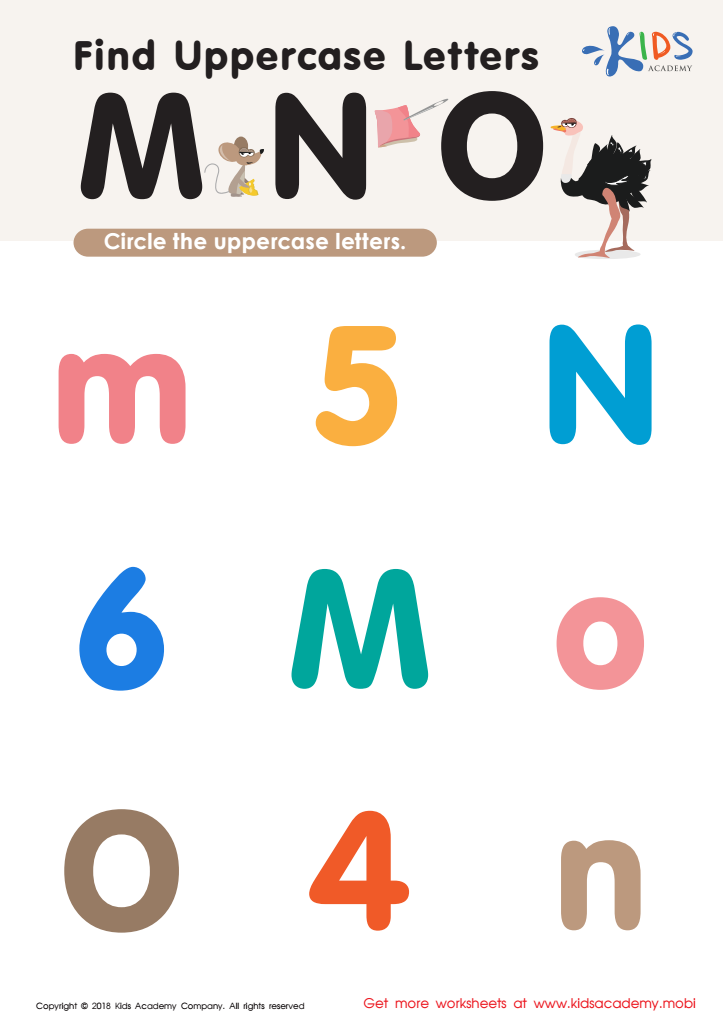Uppercase identification Uppercase Letters Worksheets for Ages 6-7
5 filtered results
-
From - To
Enhance your child's literacy skills with our engaging Uppercase Letters Worksheets, designed specifically for ages 6-7. These interactive activities focus on uppercase letter identification, helping young learners recognize and differentiate between letters in an enjoyable way. Each worksheet is carefully crafted to promote cognitive development, fine motor skills, and letter recognition through a variety of fun exercises. Parents and educators will appreciate the structured format that supports learning through repetition and practice. Download these printable worksheets to create a dynamic learning experience that lays a strong foundation for reading and writing. Start your child’s alphabetical adventure today!


Find Uppercase Letters Worksheet


Find Uppercase Letters J, K, and L Worksheet


Find Uppercase Letters A, B, and C Worksheet


Find Uppercase Letters V, W, X Worksheet


Find Uppercase Letters M, N, and O Worksheet
Uppercase letter identification is crucial for children aged 6-7 as it serves as a foundation for literacy development. At this stage, students are beginning to decode and encode written language, which paves the way for reading comprehension and writing skills. Understanding uppercase letters is essential because they are often used at the beginning of sentences and for proper nouns, making them key to conveying meaning and structure in writing.
Parents and teachers should prioritize uppercase letter identification to enhance children's phonemic awareness—recognizing different sounds associated with letters—and phonics skills. Mastery of uppercase letters aids in promoting confidence in reading aloud and participating in class activities, as well as facilitating effective communication through writing.
Furthermore, reinforcing uppercase letter recognition at this age helps form connections between letter shapes and sounds, which are integral to learning to read fluently. As children gain this competency, they develop a stronger sense of accomplishment, driving motivation and curiosity about literacy.
In conclusion, fostering uppercase letter identification prepares young learners not only for academic success but also lays the groundwork for lifelong literacy skills, making it a vital focus for parents and educators alike.

 Assign to My Students
Assign to My Students

















